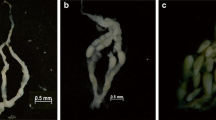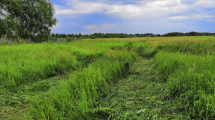Abstract
MALE hymenoptera are haploid and develop from unfertilized eggs, while females are diploid and the product of a fertilization. A female is inseminated early in her imaginal life and, at least in the Apocrita, subsequently exercises control over whether or not a sperm will be made available for a given egg. Most of the exploitations of the non-random production of the sexes seem to depend on this psychic capacity to determine whether a given egg will develop into a female or a male. Among solitary forms, male and female eggs are frequently laid in different situations. The three social groups produce very few males, all during a restricted period of the annual cycle. In the Symphyta and the “Parasitica”, the rarity of males may be further augmented by the evolution of thelytocous parthenogeneses, which also occur sporadically in the social forms. An excess of females has been assumed to be typical of the order because the females of the solitary bees and wasps produce few eggs (fifty-two is regarded as the record for such wasps1), and their elaborate maternal behaviour patterns would seem to expose them to dangers which the males can avoid. Recently, Hamilton2 has even suggested that because a female contributes twice as much genetic material to the Mendelian population as a male, a selection pressure exists to produce females preferentially.
Similar content being viewed by others
References
Jayakar, S. D., and Spurway, H., J. Bombay Nat. Hist. Soc., 62, 193 (1965).
Hamilton, W. D., J. Theoret. Biol., 7, 17 (1964).
Spurway, H., Dronamraju, K. R., and Jayakar, S. D., J. Bombay Nat. Hist. Soc., 61, 1 (1964).
Jayakar, S. D., and Spurway, H., J. Bombay Nat. Hist. Soc., 61, 662 (1964).
Jayakar, S. D., Nature, 198, 208 (1963).
Jayakar, S. D., and Spurway, H., J. Bombay Nat. Hist. Soc. (in the press).
Author information
Authors and Affiliations
Rights and permissions
About this article
Cite this article
JAYAKAR, S., SPURWAY, H. Sex Ratios of Some Mason Wasps (Vespoidea and Sphecoidea). Nature 212, 306–307 (1966). https://doi.org/10.1038/212306b0
Issue Date:
DOI: https://doi.org/10.1038/212306b0
- Springer Nature Limited
This article is cited by
-
The evolutionary maintenance of sexual reproduction: The solutions proposed for a longstanding problem
Journal of Genetics (1990)
-
Obituary
Journal of Genetics (1990)
-
List of publications of Suresh D. Jayakar
Journal of Genetics (1990)
-
Obituary
Journal of Genetics (1988)
-
Familial selection and the evolution of social behavior
Journal of Genetics (1975)





